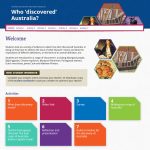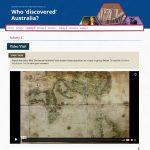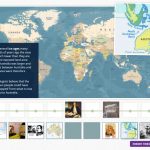Case Study Overview
Students look at a variety of evidence to determine who ‘discovered’ Australia. In doing so they have to address the issue of what ‘discover’ means and what the implications of different definitions, or elements of an overall definition, are. Students are introduced to a range of ‘discoverers’, including Aboriginal peoples and Torres Strait Islander peoples, Baijini gypsies, Chinese explorers, Macassan fishermen, Portuguese seamen, Dutch merchants, James Cook and Matthew Flinders.
An interactive entitled, Build a timeline for the discovery of Australia, is also available for this case study. This interactive has recently been rebuilt to work with iPads and modern browsers.
Case Study unit of work inquiry structure – NEW WEB FORMAT
- Activity 1: What does discovery mean?
Understanding the main concept(s) raised in the case study - Activity 2: Video visit
Looking at the video segment of this case study and answering questions about it - Activity 3: Who ‘discovered’ Australia?
Carrying out a survey - Activity 4: Making your map of Australia
- Activity 5: Using evidence from maps
Using maps to further explore who ‘discovered’ Australia - Activity 6: Reflection and presentation
Coming to a conclusion about who ‘discovered’ Australia - Activity 7: Build a timeline for the discovery of Australia
Interactive timeline
About the Interactive
Build a timeline for the ‘discovery’ of Australia iPad Friendly
Your task is to build up a chronological sequence of steps in the ‘discovery’ of Australia – and then decide who you think was responsible for its discovery. Was it Cook? Or Macassans? Or Aboriginal peoples and Torres Strait Islander peoples? Or some other individual or group?



